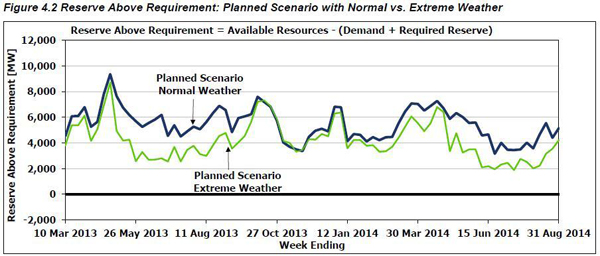The makeup of Ontario’s electrical grid is becoming steadily greener. Over the next 18 months, the Independent Electricity System Operator says in its latest Outlook, more than 3,200 MW of transmission grid-connected renewable capacity is expected to be added to the power system, including Ontario’s first two transmission-connected solar projects, located in Haldimand County and Elgin County. The annual energy expected from the addition of these renewable resources is approximately 10.9 terawatt-hours per year.
During the summer of 2014, Ontario will see its largest influx of wind generation projects, with over 1,000 MW of installed capacity integrated onto the grid over the three-month period. By August 2014, the total wind and solar generation connected to the transmission and distribution networks in Ontario will reach approximately 6,800 MW and provide approximately 14.9 TWh of annual energy.
The remaining coal-fired generating units at Lambton and Nanticoke are scheduled to stop burning coal by the end of 2013 and the conversion of Atikokan generating station from a coal-fired unit to biomass is underway, with the unit expected to be in service by the third quarter of 2014.
Embedded generation and conservation initiatives are both growing, and will more than offset any demand increases from population growth and economic expansion, leading to an overall decline in electricity consumption as measured at the wholesale level. Energy demand is forecast to decrease by 0.6% in 2013 after the 0.4% increase seen in 2012.
The growth in embedded solar capacity over the forecast period will have a significant impact on summer peak demands by effectively reducing demand for grid-supplied energy during those sunny days. Time-of-use rates and the Global Adjustment Allocation will add to this downward pressure on the summer peaks. Winter peaks will show a slight increase since they occur in the evening and will not be affected by embedded solar generation. They are also unlikely to be among the year’s high-five demand days and so not affected by the Global Adjustment consumption response.

